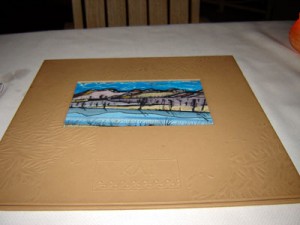In a restaurant, “menu” can mean two things: the food served at a particular restaurant, or the object you hold in your hands to learn about the items being prepared. As a restaurateur, it is easy to be so consumed with what ingredients, wording, and prices are going in your menu that the menu covering options put off until the last minute, and rushed.
The menu cover should never be ignored or thought of as less important than the actually contents of the menu. A cover is one of the first impressions a guest experiences once they are in the restaurant. The opinion of the guest will be vastly different if a menu is dirty or torn compared to clean and well-maintained, and can also alter the expectations of the type or quality of food they are going to receive.
Below are 5 common types of menus and a quick guide to them:
Washable
For the super-sustainable, earth friendly restaurant, washable menus are the best option. The covers, made out of either cloth or nylon fiber in most cases, can be easily removed and sent to the laundry if dirty. Washable menus are most commonly used in high-end restaurants, and can surprise the guest if they are not expecting to feel an interesting cloth-texture on their menu.
Wipe-able
Another environmentally friendly option, wipe-able menus are covered by translucent plastic and can be easily wiped down with a wet cloth if they become dirty. Johnny Rockets uses a wipe-able menu cover in their restaurants.
Disposable
Disposable menus are low-cost, but are not a very sustainable option. When these menus become dirty, they are thrown in the trash. The initial cost of disposable menus is usually low, but cost increases with time if the menus have to be constantly replaced.
Artistic
 Artistic menus are a great option for restaurants that want to show off creativity or further embody the brand image through the design on the menu cover. They may feature a local artist, or a famous artist that fits well with the brand. Kai in Chandler, AZ has beautiful menus that are individually created by members of the Gila River Indian Community.
Artistic menus are a great option for restaurants that want to show off creativity or further embody the brand image through the design on the menu cover. They may feature a local artist, or a famous artist that fits well with the brand. Kai in Chandler, AZ has beautiful menus that are individually created by members of the Gila River Indian Community.
Tactile
Menus that make a guest want to touch and experience the texture of the menu cover are tactile menus. They are functional, but can be made o ut of odd objects, like cork, metal or wood. A washable menu could be considered a tactile menu because of the different textures the cloth has. A tactile menu is usually unexpected and can enhance the brand image of the restaurant for the guest by incorporating the sense of touch, and increase guests long-lasting impressions of the restaurant into menu design. Depending on the type of tactile menu chosen, they can be expensive and are usually seen in upscale restaurants.
ut of odd objects, like cork, metal or wood. A washable menu could be considered a tactile menu because of the different textures the cloth has. A tactile menu is usually unexpected and can enhance the brand image of the restaurant for the guest by incorporating the sense of touch, and increase guests long-lasting impressions of the restaurant into menu design. Depending on the type of tactile menu chosen, they can be expensive and are usually seen in upscale restaurants.
Next time you’re in a restaurant, give the menu a second glance!
